
Jacksonville is the most populous city proper in the U.S. state of Florida, located on the Atlantic coast of northeastern Florida. It is the seat of Duval County, with which the City of Jacksonville consolidated in 1968. It was the largest city by area in the contiguous United States as of 2020, and became the 10th largest US city by population in 2023.
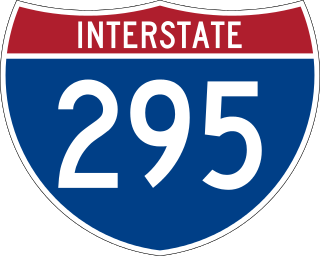
Interstate 295 (I-295), an auxiliary route of I-95, is a beltway around central Jacksonville, Florida, United States. The 61.04-mile-long (98.23 km) beltway consists of two segments, the West Beltway and the East Beltway, with I-95 serving as the dividing line between the two. The entire highway carries a hidden designation as SR 9A by the Florida Department of Transportation (FDOT). The West Beltway was constructed in the 1970s, with the East Beltway being built from the 1980s to the 2000s.

John Adrian Delaney is an American lawyer, politician, and university and college President. He served as mayor of Jacksonville, Florida, from 1995 to 2003, and as the president of the University of North Florida from 2003 to 2018. In 2021, he was named President of Flagler College after a few months as Interim. He is a member of the Republican Party.

The Jacksonville Transportation Authority (JTA) is the independent agency responsible for public transit in the city of Jacksonville, Florida, and roadway infrastructure that connects northeast Florida. However, they do not maintain any roadways. In 2023, the system had a ridership of 6,687,200, or about 24,600 per weekday as of the third quarter of 2024.
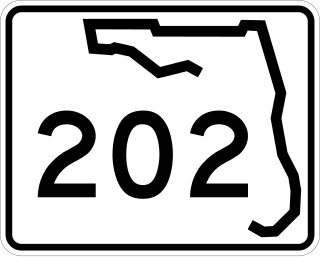
State Road 202 (SR 202) is a 13.042-mile-long (20.989 km) state highway that extends from U.S. Route 1, in Jacksonville, Florida to SR A1A, in Jacksonville Beach, near the Atlantic Ocean, just north of Ponte Vedra Beach, and includes a bridge over the Intracoastal Waterway. To locals, the road is better known as J. Turner Butler Boulevard, Butler Boulevard, or JTB. Despite being named as a boulevard, the road is a completely limited-access expressway, with the exception of the westernmost 0.5 miles between US 1 and Interstate 95 (I-95),. It was constructed in sections by the Jacksonville Transportation Authority. The first section opened in 1979, but the entire road was not completed until 1997.
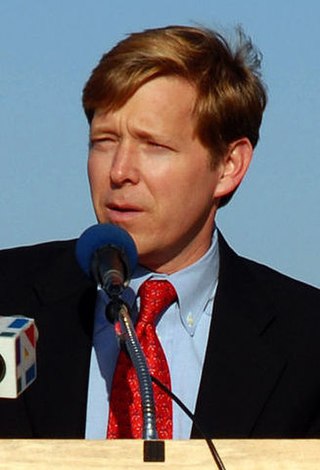
John Stephens Peyton is an American businessman and politician who is currently president of Gate Petroleum. He served as Mayor of Jacksonville, Florida from 2003 to 2011, when he was succeeded by Alvin Brown. He was the second Republican to be elected to the position since 1888. After his term he returned to Gate, his family business, and succeeded his father Herb Peyton as the company's president in January 2012.
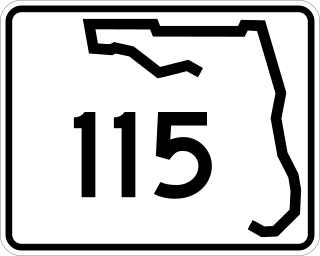
State Road 115 is a state highway in the U.S. state of Florida.
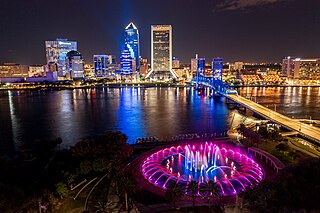
Downtown Jacksonville is the historic core and central business district (CBD) of Jacksonville, Florida, United States. It comprises the earliest area of the city to be developed and is located in its geographic center along the narrowing point of the St. Johns River.
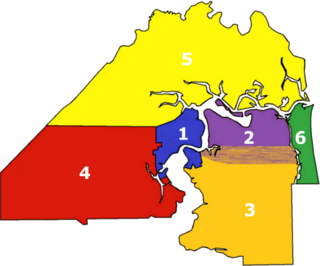
There are more than 500 neighborhoods within the area of Jacksonville, Florida, the largest city in the contiguous United States by area. These include Downtown Jacksonville and surrounding neighborhoods. Additionally, greater Jacksonville is traditionally divided into several major sections with amorphous boundaries: Northside, Westside, Southside, and Arlington, as well as the Jacksonville Beaches.
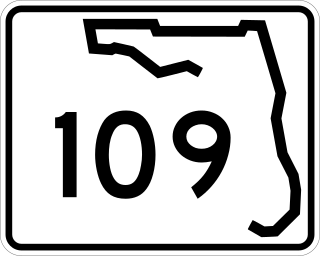
State Road 109 is a 8.707-mile-long (14.013 km) state road in Jacksonville, Florida. It is an east–west road that starts at SR 13 and ends at Jacksonville University. SR 109 is known as University Boulevard because the route forms the eastern border of Jacksonville University's campus.

LaVilla is a historic African American neighborhood of Jacksonville, Florida and was formerly an independent city. It developed after the American Civil War and was eventually annexed to the city of Jacksonville in 1887 and is now considered part of downtown.

The Duval County Courthouse is the local courthouse for Duval County, Florida. It houses courtrooms and judges from the Duval County and Fourth Judicial Circuit Courts. The new facility is located Downtown Jacksonville, Florida; it was built starting in 2009 and opened in 2012.

The Jacksonville Beaches, or Jax Beaches known locally as "The Beaches", are a group of towns and communities on the northern half of San Pablo Island on the US state of Florida's First Coast. These communities are separated from the main body of the city of Jacksonville by the Intracoastal Waterway. The Jacksonville Beaches are located in Duval and northern St. Johns counties, and make up part of the Jacksonville metropolitan area. The main communities generally identified as part of the Beaches are Mayport, Atlantic Beach, Neptune Beach, Jacksonville Beach, and Ponte Vedra Beach.
KBJ Architects, Inc. (KBJ) is an American architectural firm founded by Franklin S. Bunch, William K. Jackson, and William D. Kemp in 1946 from Jacksonville, Florida.
Donald Richard Moran, Jr. is a former lawyer and judge in the Fourth Judicial Circuit in Florida for 41 years, including 21 years as chief judge, the longest tenure in Florida history. He was an early advocate of diversion programs for people with substance abuse and directed hundreds of people into treatment rather than jail.
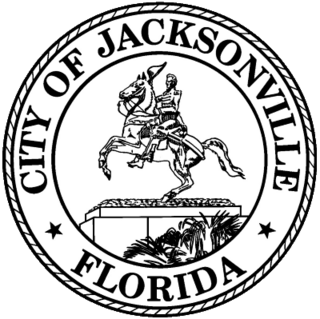
The government of Jacksonville is organized under the city charter and provides for a "strong" mayor–council system. The most notable feature of the government in Jacksonville, Florida, is that it is consolidated with Duval County, which the jurisdictions agreed to in the 1968 Jacksonville Consolidation.

The Jacksonville transportation network includes ground, air, and sea options for passenger and freight transit. The Jacksonville Port Authority (Jaxport) operates the Port of Jacksonville, which includes container shipping facilities at Blount Island Marine Terminal, the Talleyrand Marine Terminal and the Dames Point Marine Terminal. Jacksonville Aviation Authority managers Jacksonville International Airport in Northside, as well as several smaller airports. The Jacksonville Transportation Authority (JTA) operates bus, people mover, and park-n-ride services throughout the city and region. A major bus terminal at the intermodal Rosa Parks Transit Station serves as JTA's main transit hub. Various intercity bus companies terminate near Central Station. Amtrak operates passenger rail service to and from major cities throughout North America. The city is bisected by major highways, I-95 and I-10, I-295 creates a full beltway around the city.
Atlantic Boulevard is a highway in Duval County, Florida, that forms the easternmost portion of State Road 10 (SR 10) and is also part of U.S. Route 90 (US 90).
The following is a timeline of the history of the city of Jacksonville, Florida, USA.

Laura Street is a north–south street in Jacksonville, Florida, United States, named for the daughter of the city's founder, Isaiah D. Hart. Historically, the downtown portion of Laura Street has been considered the financial district of Jacksonville.















